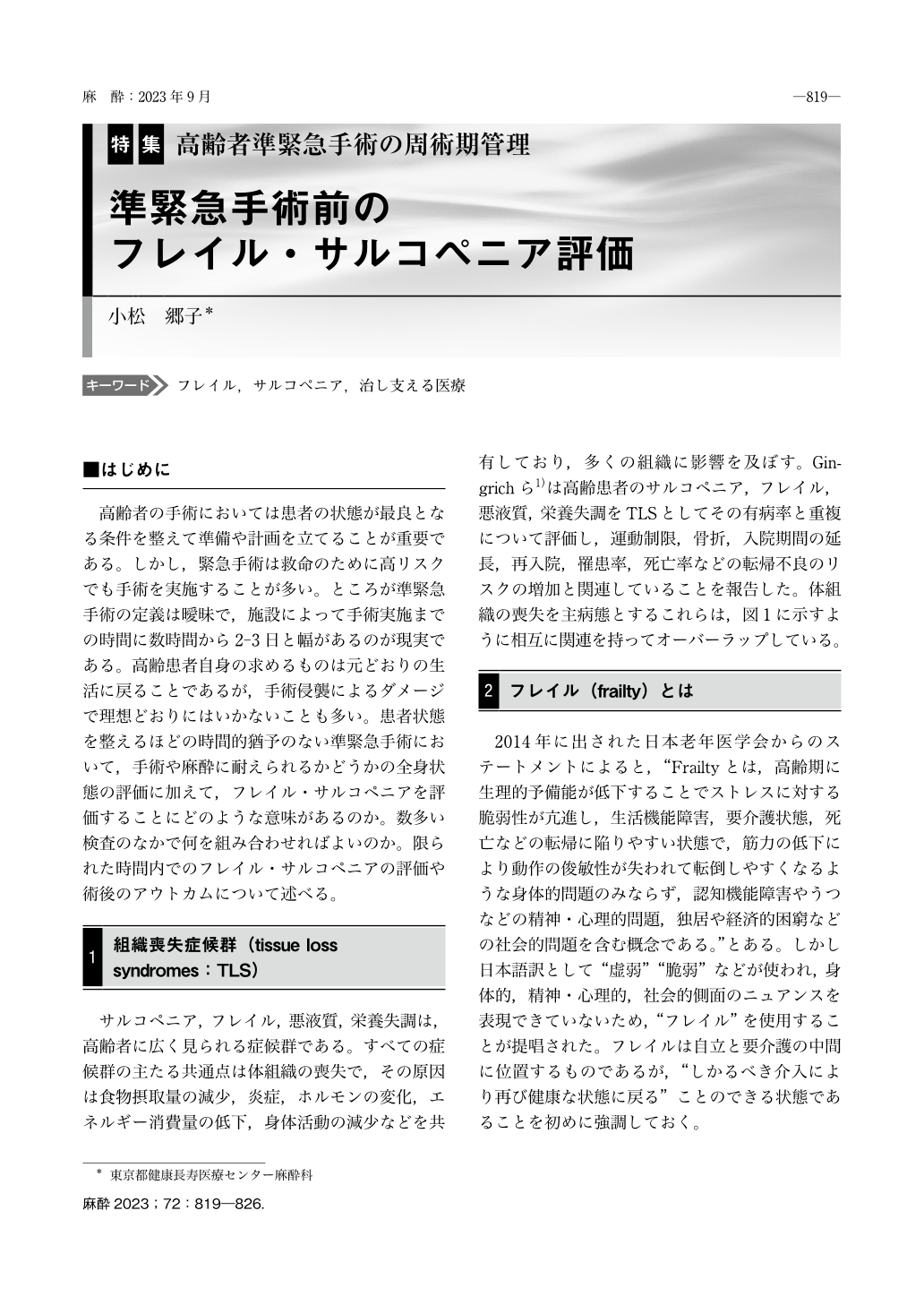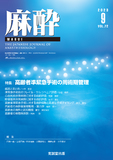Japanese
English
- 有料閲覧
- Abstract 文献概要
- 1ページ目 Look Inside
- 参考文献 Reference
はじめに
高齢者の手術においては患者の状態が最良となる条件を整えて準備や計画を立てることが重要である。しかし,緊急手術は救命のために高リスクでも手術を実施することが多い。ところが準緊急手術の定義は曖昧で,施設によって手術実施までの時間に数時間から2-3日と幅があるのが現実である。高齢患者自身の求めるものは元どおりの生活に戻ることであるが,手術侵襲によるダメージで理想どおりにはいかないことも多い。患者状態を整えるほどの時間的猶予のない準緊急手術において,手術や麻酔に耐えられるかどうかの全身状態の評価に加えて,フレイル・サルコペニアを評価することにどのような意味があるのか。数多い検査のなかで何を組み合わせればよいのか。限られた時間内でのフレイル・サルコペニアの評価や術後のアウトカムについて述べる。
Outcomes of frailty are significantly associated with postoperative complications, nursing care requirements, dementia, institutionalization, and death. However, frailty should not be viewed as an absolute contraindication to surgery.
Even in the limited time available before a semi-emergency surgery, it is worthwhile to assess frailty and sarcopenia in addition to assessing the general condition to determine whether the patient can tolerate the surgery and anesthesia. If there are areas where intervention can be done, it may have an effect on prognosis. Individualized interventions provide an opportunity to improve preoperative physiologic function through prehabilitation.
It is important to provide patients and their families with correct information about treatment while respecting their values, and to support their decision-making, ultimately respecting their will. Even when it is difficult to confirm the person’s wishes due to cognitive dysfunction or other reasons, it is necessary to assume their values and aim for consensus building with the family. It is also necessary to take measures with a view to postoperative social reintegration in a multidisciplinary manner.
I believe that a paradigm shift from “cure” medicine care to “cure and support” medicine care will become increasingly important in the future.

Copyright © 2023 KOKUSEIDO CO., LTD. All Rights Reserved.


